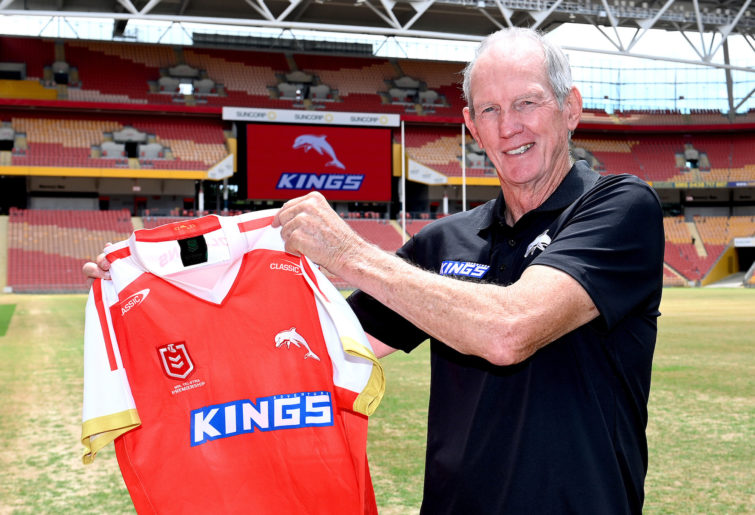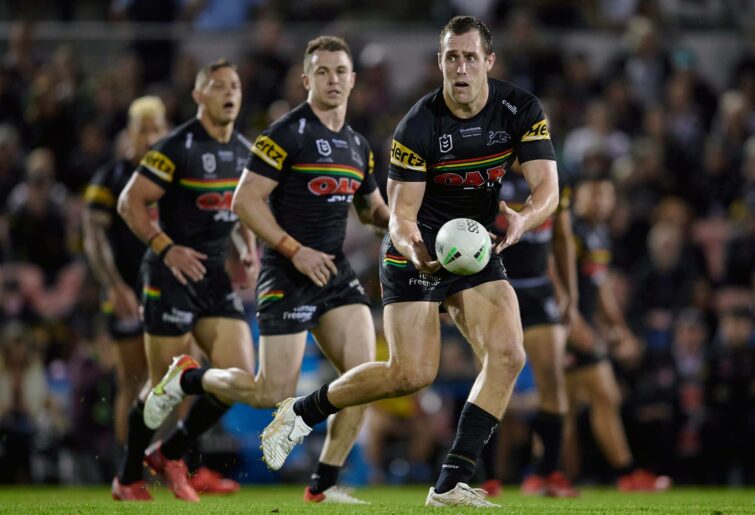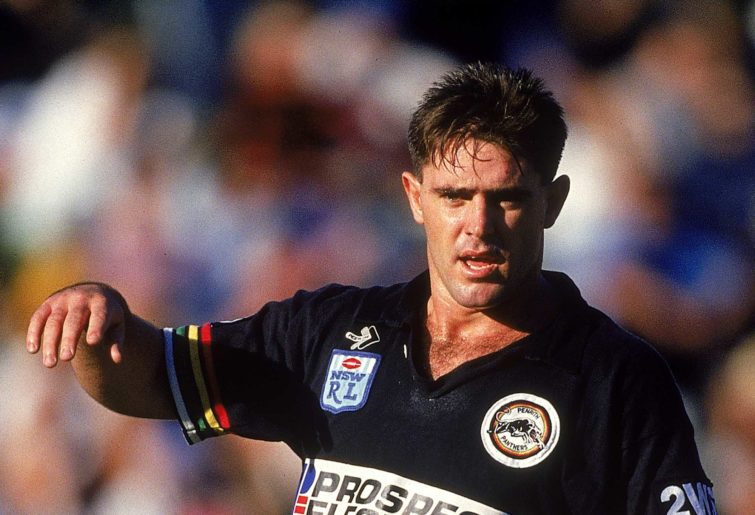In various comments on a recent Roar article criticisms were levelled at new franchise, the ‘absolutely, definitely not Redcliffe’ Dolphins for their recruitment strategy as they set up for a 2023 debut year in the NRL.
In particular, they were taken to task for focusing on ready-made NRL players from outside their catchment and not building up using their own local juniors.
There are many reasons why such a strategy is not viable in practice, at least initially.
The club has been given only 12 months to put together an NRL-ready team and they are receiving no salary cap or other concessions to do so.
Top juniors and others are already tied up with other NRL franchises, given The Dolphins were only given the green light to join the competition a short time ago.
Any marquee player hailing from the Peninsula, such as Daly Cherry-Evans, is already tied up elsewhere.
The step up to NRL from the lower tiers has never been larger. In the 1960s and even the 1980s, the last two great expansion periods, players from the second division or the bush were semi-professionals moving to a higher level, but still semi-professional competition.
Just looking at the physiques of the professional level players now shows that a 2nd division player may need more time to adjust and more NRL players around him than ever before.
Some Panthers supporters in particular were scathing of the Dolphins’ approach. They made some outlandish claims about 98 percent of Penrith players being local juniors and only 30 to 40 players in their history to have been brought in from the outside.
That got me thinking.
Firstly, are any of these claims even close to reality? Secondly what did the Panthers look like as they entered the competition back in 1967, how long did it take them to stabilise and achieve success and when they did climb the summit for their three premierships, what was the make-up of those sides?
There could be some lessons here for the Dolphins, as in many ways they are a throwback to the expansion sides of 1967 with existing rugby league set ups (i.e. Penrith and Cronulla) rather than the manufactured franchises added in more recent times.

Wayne Bennett will be the first coach of the Dolphins. (Photo by Bradley Kanaris/Getty Images)
Where have the Panthers’ players come from?
If you believe some of the more excitable fans riding the club’s current wave of success, Penrith have always been carrying the flag for junior development.
98% local juniors?
Only 30 to 40 players in their history from outside the region?
I found that hard to believe, even with these fans claiming 90 percent of Western NSW as Penrith territory (they aren’t QLD state of origin selectors are they?)
So I took the simple expedient of checking every single one of the 607 players who have turned out for the Panthers in their history and worked out roughly where they came from. And here it is:
1. Local juniors from the Penrith area – 40%. And this was being generous. Wherever a player started their first grade career at Penrith and where a cursory Google couldn’t determine their footballing origins, I gave them to the Panthers as a junior.
2. Players from outside the Penrith area who started their first grade career at Penrith – 20%. This includes players from the ‘traditional’ Panthers strongholds of Dubbo, Lithgow, West Wyalong and other parts of NSW Country.
But it also includes players from all over QLD (including one from Redcliffe!), NZ, the Pacific Islands, PNG, Newcastle and a few from traditional rivals and neighbours Parramatta.
3. Players taken from other NRL clubs – 40%. That’s right. Just under 240 players have played for Penrith after debuting for other clubs.
A whopping 47 from rivals Parramatta, 22 from Easts, 20 from Cronulla, 16 each from Balmain and Wests, 14 from St George, 13 each from Newcastle, Souths and Canterbury, 9 each from Brisbane (either Broncos or from the BRL clubs before that) and NZ, 7 from Newtown, 6 from Canberra, 5 each from North QLD and North Sydney, 4 each from Illawarra and Manly, 3 from Gold Coast, 2 from Melbourne.
As well as the NRL, Penrith have also looked to England (6), rugby union (3 including one of these from South Africa) and even France (1).
The same numbers for the last five seasons since 2017 (as far as I can tell and I admit this is a bit loose) is around 35% local juniors, 35% outsiders but Panthers as first club and 30% signed from other clubs.

(Photo by Brett Hemmings/Getty Images)
So a 10% reduction in poaching but also less local juniors, replaced by heading out west and searching Country NSW. But overall the pattern seems relatively similar.
So the myth is busted, thanks to a few hours on Rugby League Project. Or is it? I don’t have the time nor inclination to do a similar exercise for other teams, but I would imagine 60-70% either locals or from outside but starting first grade at the club is actually pretty good compared to other clubs.
How did the Panthers’ 1967 side stack up?
Not well as it turned out. There was just one single local junior on debut in their first match, second rower Wal Crust. There were two others making their debut from NSW Country, but the remaining 10 were all signed from other clubs. So 10 of 13 were taken from other clubs for Game 1.
FULLBACK – Bill Tonkin – Balmain
WING – Bob Landers – Easts
CENTRE – Ern Gillon – Parramatta
CENTRE – Wayne Peckham – NSW Country (Moree)
WING – Dave Applebee – NSW Country (Gunnedah / Oakdale)
FIVE-EIGHTH – Maurie Raper – Canterbury and Wests
HALFBACK – Laurie Fagan – Balmain
FRONT ROW – Barry Harris – Newtown and South Sydney
HOOKER – Ron Workman – Parramatta
FRONT ROW – Geoff Waldie – Easts
SECOND ROW – Bill McCall – Easts and Parramatta
SECOND ROW – Wal Crust – local junior
LOCK – Tony Brown – Newtown
So Penrith initially went with a ready-made side from outside their district filled with NSWRL experience, just as the Dolphins appear to be doing. Did it go well? No it did not.
The Panthers finished just clear of fellow new side Cronulla in the race for the wooden spoon. It would be nearly 20 years, a pair of spoons and a memorable afternoon when Manly put 70 points on them before the club reached finals for the first time.
What this tells me is that the Dolphins approach of trying to stack their side with existing NRL experience is the accepted method and should not be looked down upon, but it doesn’t necessarily bring immediate success and this should not be expected.
More likely it allows them to mark time and avoid some embarrassment while they work to develop their pathways and find that once in a generation player to propel them to relevance.
Comparing the Panthers’ premiership-winning teams.
After 24 years had passed, the Panthers first tasted premiership success. This was followed 12 years later in 2003 and after another 18 seasons by 2021. What was the make-up of these three teams and were there any similarities between the eras?
1991
This side had only four players signed from other clubs, with six local juniors and another five who debuted with the club. Their half, captain and most celebrated player was a local junior. 27% bought from other clubs is well down on Penrith’s overall average of 40%.
FULLBACK – Greg BARWICK – signed from Canterbury
WING – Graham MACKAY – signed from Wests
CENTRE – Brad FITTLER – local junior
CENTRE – Col BENTLEY – from Cudgen and debuted with Penrith
WING – Paul SMITH – from Liverpool and debuted with Penrith
FIVE-EIGHTH – Steve CARTER – from Wyong and debuted with Penrith from high school
HALFBACK – Greg ALEXANDER (c) – local junior
FRONT ROW – Paul CLARKE – signed from Balmain
HOOKER – Royce SIMMONS – played first grade rugby league for both Cowra and Canowindra as a teenager, NSWRL debut with Penrith.
FRONT ROW – Paul DUNN – signed from Canterbury
SECOND ROW – Mark GEYER – from Granville near Parramatta, debuted with Penrith
SECOND ROW – Barry WALKER – local junior
LOCK – Colin VAN DER VOORT – local junior
BENCH – John CARTWRIGHT – local junior
BENCH – Brad IZZARD – local junior

Brad Fittler of the Panthers (Photo by Getty Images)
2003
Signings from other clubs doubled for the club’s next premiership to 8, but there were also 8 local juniors including their half, captain and most celebrated player (see a pattern here?). Only one player was scouted and debuted from outside the local area. But at 47% bought from outside, this team was less ‘local’ than the average Panthers team.
FULLBACK – Rhys WESSER – from Rockhampton, debuted with Penrith
WING – Luke LEWIS – local junior
CENTRE – Ryan GIRDLER – signed from Illawarra
CENTRE – Paul WHATUIRA – signed from Melbourne
WING – Luke ROONEY – local junior
FIVE-EIGHTH – Preston CAMPBELL – signed from Cronulla
HALFBACK – Craig GOWER (c) – local junior
FRONT ROW – Joel CLINTON – local junior
HOOKER – Luke PRIDDIS – signed from Brisbane
FRONT ROW – Martin LANG – signed from Cronulla
SECOND ROW – Joe GALUVAO – signed from Auckland
SECOND ROW – Tony PULETUA – local junior
LOCK – Scott SATTLER – signed from South QLD Crushers
BENCH – Ben ROSS – signed from St George
BENCH – Trent WATERHOUSE – local junior
BENCH – Shane RODNEY – local junior
BENCH – Luke SWAIN – local junior
2021
The current Penrith juggernaut is based on only 5 players signed from other clubs, with the other 12 either local juniors or debuting with the club.
This 70% local or locally developed is only slightly lower than the 1991 side. And once again their half, captain and most celebrated player is a local junior.
FULLBACK – Dylan EDWARDS – from Bellingen, south west of Coffs Harbour, debuted with the club
WING – Stephen CRICHTON – local junior
CENTRE – Paul MOMIROVSKI – signed from Melbourne
CENTRE – Matt BURTON – from Dubbo, debuted at the club
WING – Brian TO’O – local junior
FIVE-EIGHTH – Jarome LUAI – local junior
HALFBACK – Nathan CLEARY (c) – local junior
FRONT ROW – Moses LEOTA – local junior
HOOKER – Apisai KOROISAU – signed from South Sydney
FRONT ROW – James FISHER-HARRIS – from NZ, debuted with the club
SECOND ROW – Liam MARTIN – from West Wyalong, debuted with the club
SECOND ROW – Kurt CAPEWELL – signed from Cronulla
LOCK – Isaah YEO – from Dubbo, debuted with the club
BENCH – Viliame KIKAU – signed from North Queensland
BENCH – Tyrone MAY – local junior
BENCH – Scott SORENSEN – signed from Cronulla
BENCH – Spencer LENIU – local junior
Lessons for the Dophins
There are certainly ways to build and maintain a successful club other than the recent Penrith method – look no further than The Storm or The Roosters. However, it’s only natural that the NRL’s newest franchise will look to the current benchmark for inspiration (and few players as well, thanks for that!).
What the Penrith experience tells us is that even a club from a rugby league district with a healthy junior base may need to start with a team of ‘mercenaries’ to be competitive. One way to success from that point, for a ‘rugby league heartland’ club is to push towards a healthy dose of juniors and development players.
In particular, it doesn’t hurt if your captain and best players are also those who understand the culture of the club and the district. If Redcliffe had joined the competition a decade earlier that player might have been Daly Cherry-Evans.
Now they will have to identify and capture that player and hope it doesn’t take 24 years before a prodigy emerges from somewhere in Margate or North Lakes.































































































